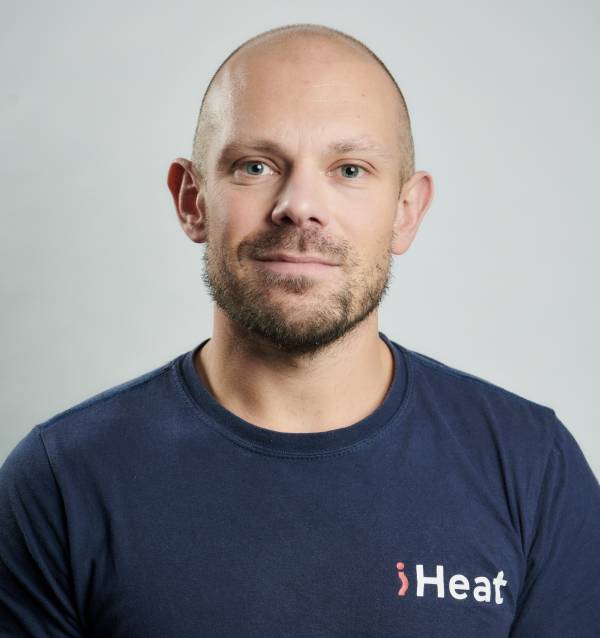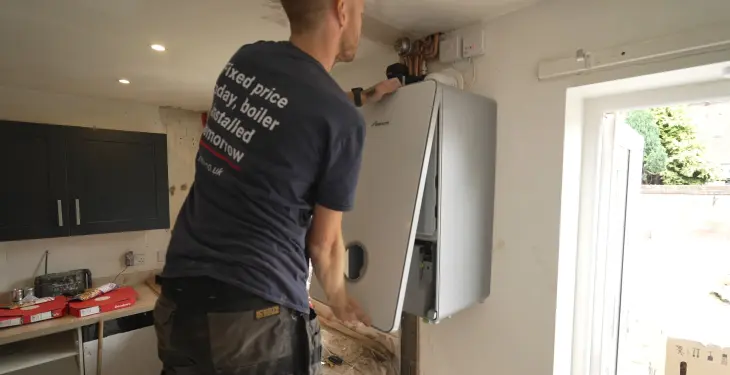

Written by Stephen Day
Gas Safe Engineer
Updated: 30th May, 2025
Familiarising yourself with common Vokera fault codes and their meanings can be crucial in swiftly addressing and resolving boiler issues, ensuring minimal disruption to your comfort.
Get a new boiler quote, save up to £550 per year (0% APR available).
Operating a Vokera boiler in your home means enjoying efficient heating and hot water—until an error code appears. These codes signify specific issues ranging from minor sensor faults to more severe problems requiring professional attention.
Familiarising yourself with common Vokera fault codes and their meanings can be crucial in swiftly addressing and resolving boiler issues, ensuring minimal disruption to your comfort.
Initial troubleshooting steps can often be taken by homeowners before seeking expert help. For example, a flashing red light indicates the system is in fault and lockout mode, typically due to a persistent issue that needs resolving to restore function.
Some issues, like a fan error indicated by code A03, are more technical and necessitate the assistance of a Gas Safe-registered engineer. It's imperative to address these faults promptly to prevent potential safety risks or further damage to the boiler.
Get a quote in 60 seconds, fitted as fast as next day!
0% APR finance available.
While some error codes are straightforward enough to be identified and fixed by homeowners, we always advise contacting a Gas Safe engineer to assess the situation and carry out any repairs necessary.
All of iHeat’s engineers are fully qualified and Gas Safe, ensuring a swift and safe installation.
Indicates the boiler has automatically stopped.
A general alert to contact service personnel.
Indicates that the flame is currently active.
Shows that the preheating function is operational.
Indicates the preheating function is in progress.
The boiler is in standby mode.
The boiler is turned off.
The flame is not sensed, indicating an internal fault.
Problem detected with the limit thermostat.
Indicates an issue with the boiler's fan.
Water pressure in the system is too low.
Domestic hot water thermistor has an issue.
Water temperature is excessively high.
High temperature detected in return water.
Issue with the flue thermistor or its counter.
Erroneous flame detection.
Problem with the low-temperature thermostat.
Suggests resetting the boiler; if persistent, contact a heating engineer.
Check and refill system pressure; reset boiler, contact engineer if persistent.
Similar to AL40, with emphasis on refilling and contacting an engineer if repeated.
Advises contacting a heating engineer.
Recommends a reset, and if the issue recurs, contact a heating engineer.
Indicates a problem with flame detection or ignition.
Detection of an unexpected flame.
Issue with the limit thermostat.
Problem detected with the fan.
Check system water pressure; indicates a transducer issue.
Issue with the domestic hot water probe.
Indicates flow sensor issues or temperature differential alarm.
Problem with the main zone water thermostat.
Issue with over temperature or differential alarm in the return line.
High temperature detected in flue gases.
Indicates the need for cleaning the primary heat exchanger.
Indicate water pressure issues or loss of communication.
Potential ionisation issues.
Indicates combustion problems or high carbon monoxide levels.
Issue with the main voltage supply.
Problem with current modulation.
Alarm indicating obstruction in fumes exit path.
The boiler is unable to ignite.
The boiler is overheating.
Issue with the fan or flue system.
Water pressure is too low.
Advises reset similar to the failure to ignite.
Hot water thermistor has an open circuit.
Primary thermistor is open-circuited.
Indicates a need for calibration.
A service operation is in progress.
Boilers can be a daunting purchase for many people as they’re an appliance with a lot of responsibility, providing heat for you and your family is something you want to get right. Boilers aren’t exactly a quickly disposable item either, potentially lasting you a decade.
Effectively, New boiler cost can be split into two segments: the first is the actual boiler itself (unit price), and the second is the cost of the boiler being installed (set up) in your property by an expert engineer.
Here at iHeat, we want to remove all of this undue stress and make the decision making process of upgrading to a new central heating system, as easy as possible.
Boiler costs can vary depending on a number of factors including their brand, model, fuel, output, warranty, labour and installation type. Typically a new boiler will cost between £1,845 and £3,500, below is a list of average boiler installations offered by iHeat (guide only).
Installation Type | Price (inc VAT) | |
Combi to combi swap | £1,845 | |
System to combi conversion | £2,499 | |
New boiler install | £2,899 | |
Back boiler to a combi | £3,299 | |
System to system | £1,945 |
Last updated: 30th May, 2025

Written by Stephen Day
Gas Safe Engineer at iHeat
Stephen Day is a Gas Safe registered and FGAS certified engineer with over 20 years of hands-on experience in the heating, cooling, and renewable energy industry, specialising in boiler installations, air conditioning, and heat pump systems.
LinkedInArticles by Stephen Day are reviewed by iHeat’s technical team to ensure accuracy and reliability.

22nd December, 2025
Based on data from over 7000 boiler installations completed by iHeat in the past 12 months...
 Read Article
Read Article

22nd December, 2025
Here’s a quick roundup of the best combi boilers for 2026.
 Read Article
Read Article

22nd December, 2025
When your old boiler breaks down and it comes time to replace it with a new one, it might...
 Read Article
Read Article
No obligation. Takes less than 60 seconds.